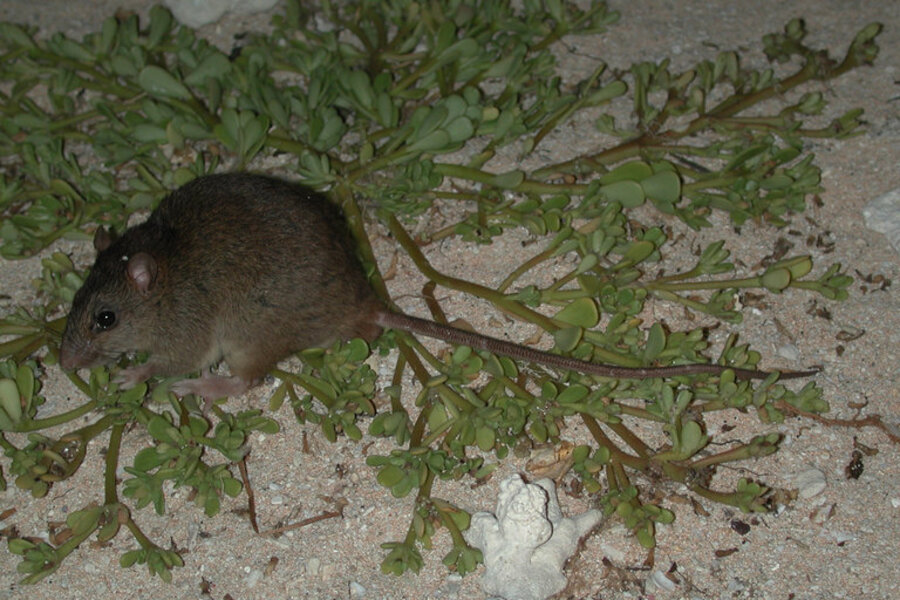Meet the first known mammal to go extinct from manmade climate change
Loading...
Bramble Cay is a small cay, or low-lying sandy island on top of a coral reef, located almost 33 miles southeast of Papua New Guinea.
The island is less than 10 acres but subject to constant changes in size because of storms, winds, and varying sea levels. With a maximum elevation of three meters above high tide, Bramble Cay is home to only patchy vegetation, seabirds, nesting green turtles and the melomys, a small mouse-looking rodent.
And while the Bramble Cay melomys appear inconspicuously ordinary, they are anything but.
“Adding to Bramble Cay’s biodiversity and conservation values is that the island is the only known location of a terrestrial mammal, the Bramble Cay melomys Melomys rubicola,” a team of researchers from Queensland’s Threatened Species Unit and The University of Queensland write in a report on the Bramble Cay melomys published this month. “This rodent is remarkable in possessing the most isolated and restricted distribution of all Australian mammals. It is also ecologically unique and considered to be the Great Barrier Reef’s only endemic mammal species.”
But the Bramble Cay melomys are noteworthy in another regard, say the authors: They are likely the first mammal species to go extinct because of anthropogenic, or human-induced, climate change. Their originality became their demise, write the authors in their extinction report, as increasingly frequent storms and rising seas killed an isolated population without any means to escape.
“For low-lying islands like Bramble Cay, the destructive effects of extreme water levels resulting from severe meteorological events are compounded by the impacts from anthropogenic climate change-driven sea-level rise,” write the authors. Global mean sea level has risen by almost 20 cm between 1901 and 2010, say the authors, “a rate unparalleled in any period during the last 6,000 years.”
And annually the rate of sea level rise has risen from 1.7 to 3.2 millimeters per year in the last two decades, a parallel response to higher greenhouse gas emissions and anthropogenic climate change at large.
“I think this is significant because it illustrates how the human-caused extinction process works in real time,” Anthony Barnosky, an expert on climate change’s effects and a professor at the University of California, Berkeley, tells The New York Times. The disappearance of the melomys is “a cogent example of how climate change provides the coup de grâce to already critically endangered species.”
In December of 1978, several hundred individuals were recorded on the island. And then 20 years later in 1998, researchers counted 42 individuals out of a predicted population of 93. The record decreased to 12 individuals in 2004, then down to one or two in 2009.
Eventually, no melomys were recorded on visits to the island in 2011, 2013, and 2014.
“Ocean inundation is an anticipated climate change-driven impact on low-lying reef islands caused by changing weather and oceanographic regimes, a greater frequency and intensity of cyclones and rising sea levels,” write the authors. And “information about the various meteorological and oceanographic influences on the Torres Strait provides a compelling case that repeated ocean inundation driven by anthropogenic climate change posed the most severe, immediate and all-pervasive threat to this rodent population, ultimately sealing its fate.”








